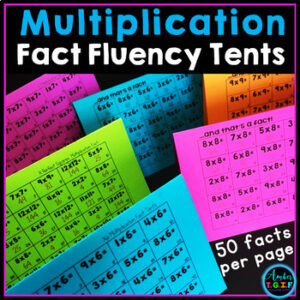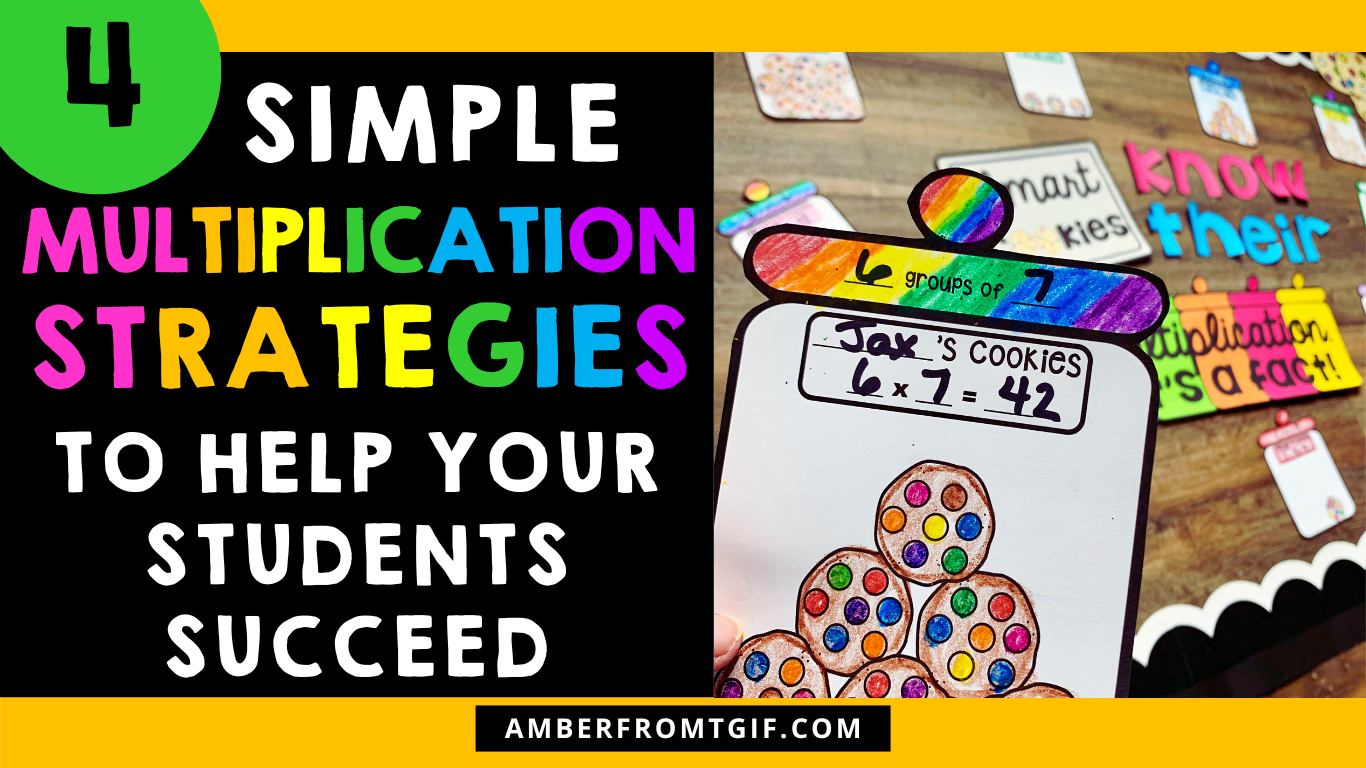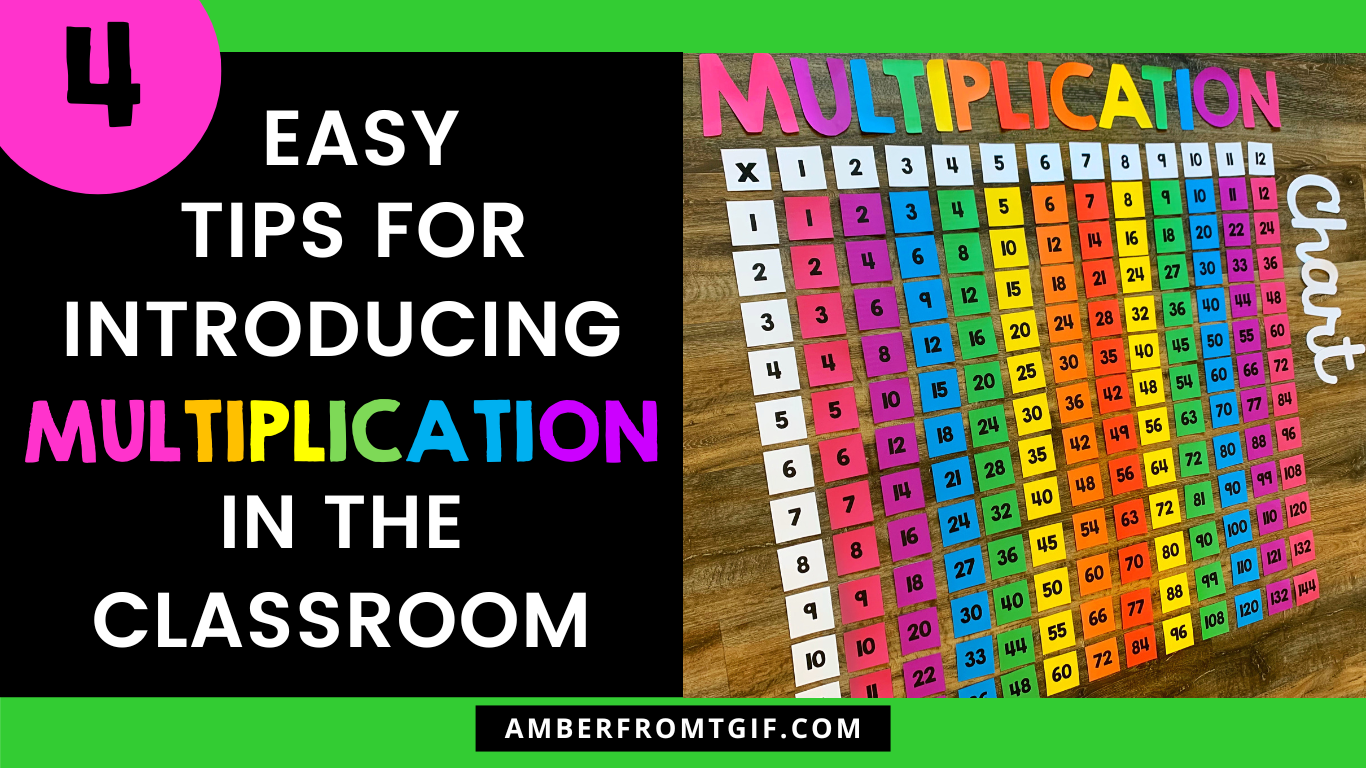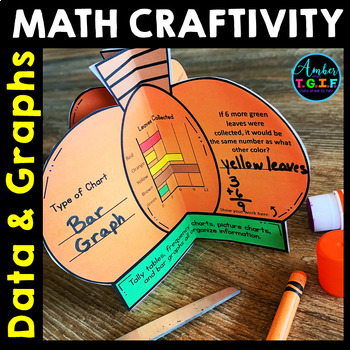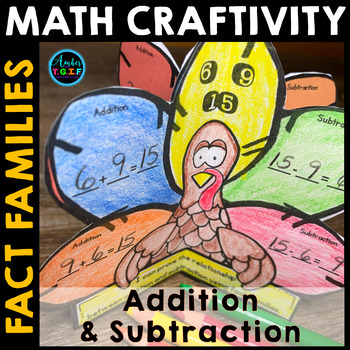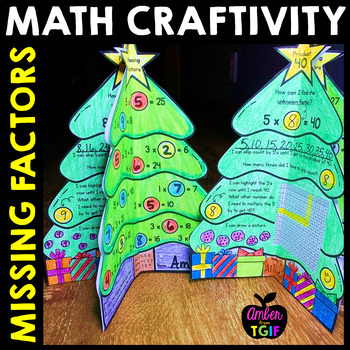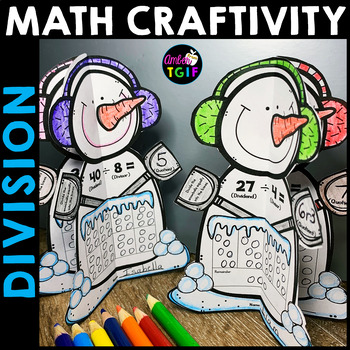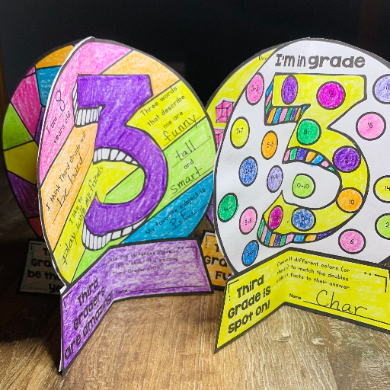Answer: You CAN teach multiplication facts in ANY order you wish, but having a well-thought-out order and plan will help students easily transition to each new fact. It’s all about building confidence, reinforcing patterns, and making learning as smooth as possible. Here’s my tried-and-true order for introducing multiplication to 2nd and 3rd graders, complete with some of my favorite tips and tricks!
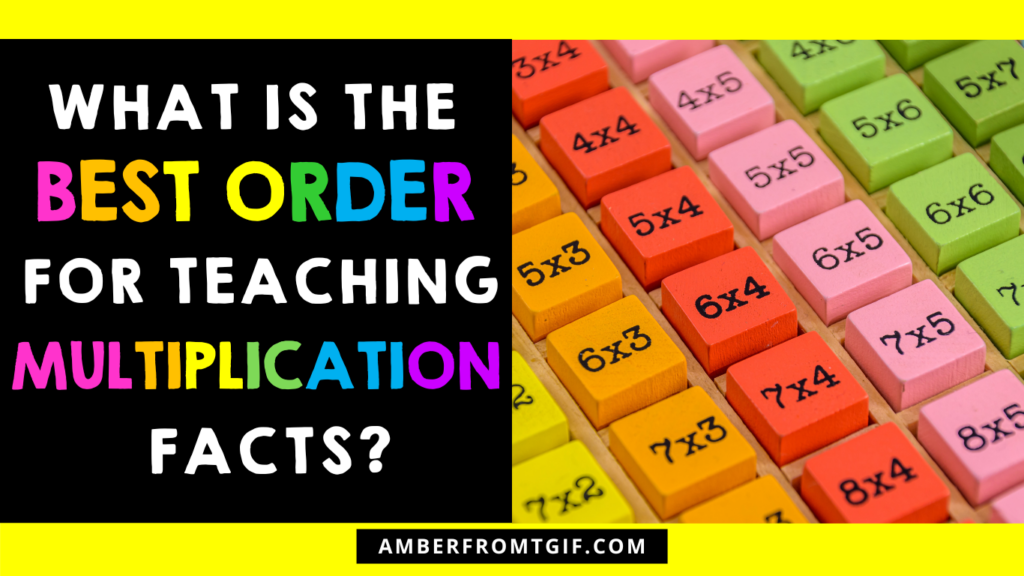
SUGGESTED ORDER OF TEACHING MULTIPLICATION FACTS
Multiplying by 2
Starting with 2s is a no-brainer. Most kids already know how to skip count by twos, so we just review it every day. Plus if they’re familiar with their doubles addition facts, multiplying by 2 becomes a breeze. It’s a great way to ease into multiplication without too much heavy lifting.
Multiplying by 5
Next up, the 5s. Students usually have skip counting by fives down pat; so we give it a quick review, and they’re ready to roll. The patterns in the 5s are straightforward, which helps boost their confidence early on.
Multiplication Fact Fluency
I have a freebie you can download for practicing your 5s multiplication facts! It’s called a Fact Fluency Tent and one sheet of paper is the equivalent of 50 flash cards! It makes practicing your facts so easy for the student and the teacher! Get the 5s Fact Fluency Tent here.
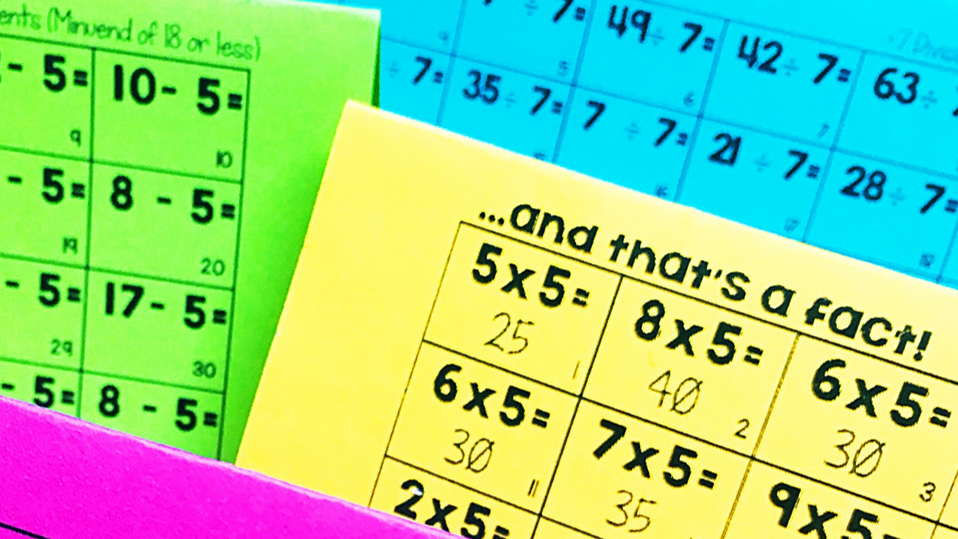
Multiplying by 7
Here’s where things get interesting. Multiplying by 7 often feels like a huge leap for my students, so I like to tackle it early to show them they can conquer the “challenging numbers.” We practice skip counting by 7s using this catchy YouTube song. Before long, they realize it’s not so hard after all!
Multiplying by 3
With the 7s under their belt, we move on to the 3s. Skip counting by threes can be tricky at first, but we use this fun YouTube Skip Counting by 3s song to practice, and it quickly becomes second nature.
Multiplying by 0 & 1
Now, I know some teachers start with multiplying by 0 and 1, but I like to introduce them a bit later. They’re not really “multiples” in the traditional sense, but their important for understanding the basics of multiplication. We tackle these together and get them out of the way.
Multiplying by 4
For the 4s, we practice skip counting using another YouTube song. I also have a video of my class (from years ago) practicing “disappearing skip counting,” which makes it even more fun and engaging.
Multiplying by 9
Ah, the 9s! My mom taught me a trick for these when I was in 3rd grade, and I still use it today! Some teachers say you shouldn’t count on your fingers, but I say, “Why not?” Fingers are a built-in calculator! Check out this adorable YouTube video that shows how to use your fingers for multiplying by 9. It’s a game-changer.
Multiplying by 6
By the time we get to the 6s, students already know 0x6, 1×6, 2×6, 3×6, 4×6, 5×6, 7×6 and 9×6. That just leaves 6×6 and 8×6. To help students master these two facts, practice chanting “6×6 is 36” and “8×6 is 48” as attention-getters throughout the day. Practice writing it by having them write it every time they write their name on the paper for one day. It will eventually stick!
Multiplying by 8
At this point, the ONLY fact they haven’t learned is 8×8=64. I turned this one into a chant as a call back attention getter. Here is how I use it throughout the days we practice.
Teacher: skate x skate = slicky floor
Students: 8 x 8 = 64
It’s the final piece of the puzzle, and once they’ve got it, they’re multiplication masters!
Well….to be honest….we don’t stop practicing throughout the year. In order for students to truly become fluent in their multiplication facts, you must practice, practice more, and practice even more! I use Multiplication Fact Fluency Tents every day in the classroom to ensure that my students get plenty of practice and they also practice them in the evenings for homework. Once you have the routine down, it takes less than 4 minutes out of each day.
Multiplying by 10 and beyond
Finally, we review skip counting by 10s. It’s simple and straightforward, and by now, students see it as a walk in the park. This review helps solidify their understanding and gives them a strong sense of accomplishment. Of course, you can also introduce multiplying by 11 and 12 if you wish!
Make your Multiplication Fact Order Plan
By following this order, we build a solid foundation and progressively tackle more challenging facts. Each step reinforces the previous ones, making the process smoother and more enjoyable. Happy multiplying!

Discover More Teaching Tips in these Blog Posts
Tips on Teaching Rounding to the Nearest 10 and 100
Making Math Meaningful and Engaging with Crafts
Tips for Teaching the Distributive Property of Multiplication

